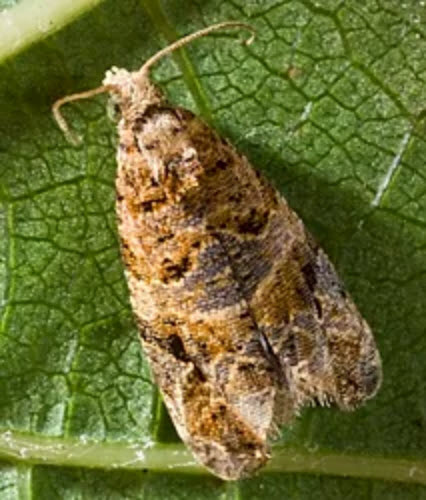European Grapevine Moth

A remarkable success which the PD/GWSS Board participated in was the eradication of the European grapevine moth (Lobesia botrana) (EGVM), which was first detected in 2009 and eventually found in 10 California counties. Eradication of EGVM in August of 2016 saved the winegrape industry hundreds of millions of dollars in crop loss, treatments, and loss of markets.
Origin: This moth is originally from Europe, northern and western Africa, the Middle East, southern Russia, and Japan. It has recently invaded and become established in Chile.
Host Range: EGVM larvae preferentially feed on grape flowers and fruit, olive flowers, and new growth of its presumed original host, spurge laurel. However, it will also feed on the flowers and/or fruit of a variety of other plants such as blackberry, carnation, cherry, currant, gooseberry, ivy, kiwifruit, nectarine, persimmon, plum, pomegranate, and privet.
How it Spreads: Sources of EGVM include grape clusters, vine clippings, nursery stock, and grape production equipment.

